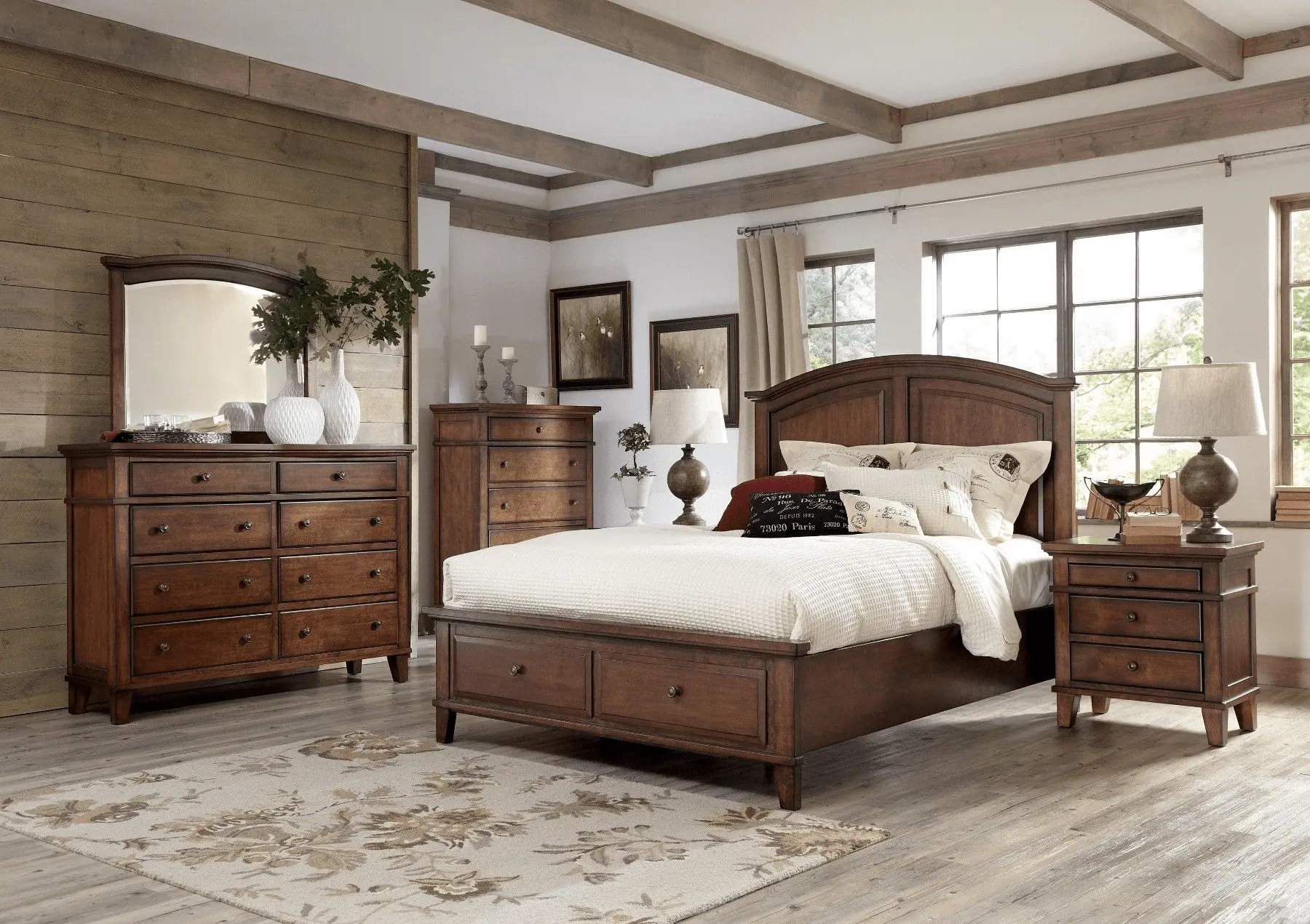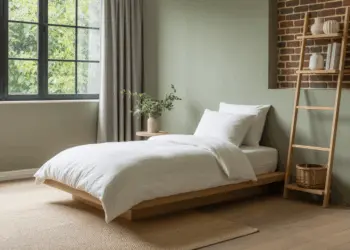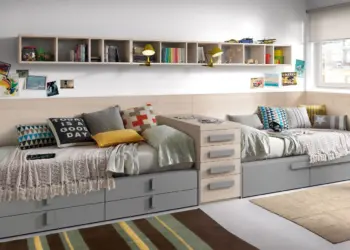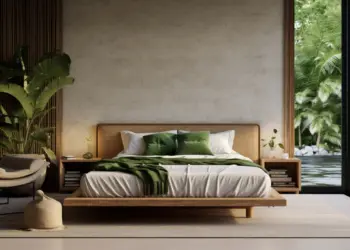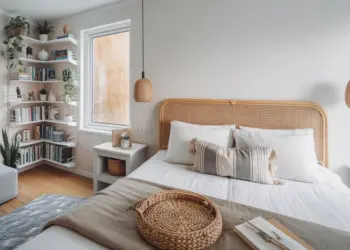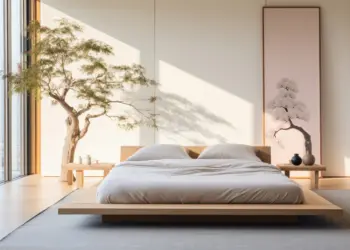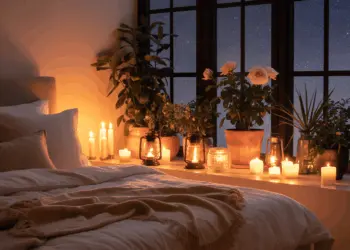Designing and arranging bedroom furniture requires a strategic approach to maximize comfort, functionality, and aesthetic appeal. Whether you’re working with a spacious master bedroom or a cozy guest room, understanding the fundamentals of bed and dresser placement is essential for creating a harmonious and inviting space. This guide offers valuable insights and practical tips on optimizing your bedroom layout to ensure a seamless and well-balanced arrangement that caters to both your practical needs and personal style preferences.
Table Of Content
Assessing the Bedroom Space
Before diving into the specifics of furniture arrangement, it’s crucial to assess the available space in your bedroom. Consider the room’s dimensions, architectural features, natural lighting, and any existing furniture pieces that need to be incorporated into the new layout. By gaining a comprehensive understanding of the room’s layout, you can make informed decisions about the placement of key bedroom furniture elements.
Choosing the Right Bed Placement
The bed serves as the focal point of any bedroom, and its placement significantly impacts the overall ambiance and functionality of the space. Depending on the room‘s size and layout, there are several key considerations to keep in mind when positioning the bed. Factors such as room orientation, traffic flow, and proximity to windows and doors play a vital role in determining the ideal bed placement for a comfortable and visually appealing arrangement.

Maximizing Dresser Placement
Dressers are essential for storage and organization, contributing to the overall functionality and aesthetics of the bedroom. When arranging the dresser, prioritize accessibility and convenience while ensuring it complements the bed placement and other bedroom furniture elements. Consider factors such as drawer accessibility, available wall space, and the overall flow of the room to achieve an efficient and visually pleasing dresser arrangement.

Considering Nightstand Positioning
Nightstands provide additional storage and surface space while enhancing the visual balance and functionality of the bedroom. When positioning nightstands, aim for symmetry and proportion to create a cohesive and well-coordinated layout. Ensure that the nightstands are within comfortable reach of the bed and accommodate essential items such as lamps, books, and personal belongings for a functional and visually appealing bedside setup.

Incorporating Additional Seating
Beyond the primary furniture pieces, incorporating additional seating options can enhance the functionality and style of the bedroom. Whether you opt for a cozy armchair, a stylish bench, or a versatile ottoman, strategically placing additional seating contributes to the overall comfort and versatility of the room. Consider the available space and the intended purpose of the seating area to create a welcoming and multi-functional environment.

Utilizing Mirrors for Visual Enhancement
Mirrors serve as powerful design elements that can amplify natural light, create the illusion of space, and enhance the visual appeal of the bedroom. When integrating mirrors into the furniture layout, focus on strategic placement that maximizes their reflective properties and contributes to the overall ambiance of the room. Experiment with various mirror sizes, shapes, and frames to achieve the desired visual impact and style.

Optimizing Closet and Storage Integration
Efficient closet and storage integration are crucial for maintaining an organized and clutter-free bedroom. Evaluate the available closet space and explore practical storage solutions that complement the overall furniture arrangement. Incorporate storage containers, shelves, and organizers that align with your storage needs and contribute to a well-structured and visually appealing bedroom environment.

Creating a Focal Point in the Room
Establishing a focal point in the bedroom adds depth, character, and visual interest to the space. Whether it’s an eye-catching headboard, a striking piece of artwork, or a curated gallery wall, a well-defined focal point serves as the centerpiece that anchors the entire furniture layout. Select a focal point that reflects your personal style and enhances the overall theme and ambiance of the room.

Balancing Symmetry and Proportion
Maintaining a sense of symmetry and proportion is essential for achieving a balanced and visually appealing furniture arrangement. Whether you prefer a symmetrical layout or a more eclectic approach, strive to create a harmonious balance between the various furniture pieces and design elements. Pay attention to the scale, size, and placement of each item to ensure a well-proportioned and aesthetically pleasing bedroom composition.

Selecting Suitable Lighting Fixtures
Effective lighting plays a crucial role in setting the mood and atmosphere of the bedroom. Consider a combination of ambient, task, and accent lighting to create a versatile and inviting space. Explore a diverse range of lighting fixtures, including bedside lamps, overhead lighting, and wall sconces, to establish a well-lit environment that caters to different functional and aesthetic requirements.

Exploring Bedroom Furniture Layout Variations
Flexibility in bedroom furniture layout allows for creative experimentation and customization based on personal preferences and room dimensions. Explore various bedroom furniture layout variations, such as centering the bed, incorporating diagonal arrangements, or experimenting with asymmetrical configurations, to discover the most suitable and visually appealing arrangement that complements your lifestyle and design preferences.
ways to arrange furniture in a small bedroom
In small bedrooms, optimizing space and functionality are paramount to create an inviting and uncluttered environment. Focus on space-saving furniture, multifunctional storage solutions, and streamlined design elements that maximize the available square footage without compromising on style and comfort. Embrace innovative furniture arrangements and compact design strategies to make the most of every inch of your bedroom.

Incorporating Personal Style and Décor
Infuse your unique personality and style into the bedroom design by incorporating personalized decor and accessories that reflect your individual taste and preferences. Experiment with a diverse range of textures, colors, patterns, and decorative accents to create a visually stimulating and inviting atmosphere. Strike a balance between simplicity and visual intrigue to curate a bedroom space that resonates with your personal aesthetics and design sensibilities.

Maintenance and Adaptability
Regular maintenance and periodic adjustments are essential for preserving the functionality and appeal of your bedroom furniture arrangement. Develop a practical maintenance routine that includes cleaning, organizing, and occasional updates to accommodate changing preferences and lifestyle requirements. Prioritize adaptability and flexibility in your furniture layout to ensure seamless transitions and effortless adjustments over time.

FAQs
How much space should I leave around the bed for optimal circulation?
Providing at least 2 to 3 feet of clearance around the bed allows for easy movement and accessibility, ensuring comfortable circulation and functional maneuverability within the bedroom.
What are some creative storage solutions for small bedrooms with limited space?
Explore under-bed storage options, wall-mounted shelves, and multi-functional furniture with built-in storage compartments to maximize space and create efficient storage solutions in small bedrooms.
Should I prioritize functionality or aesthetics when arranging bedroom furniture?
Strive for a balance between functionality and aesthetics, prioritizing both practical considerations.
Should I prioritize functionality or aesthetics when arranging bedroom furniture?
Strive for a balance between functionality and aesthetics, prioritizing both practical considerations and visual appeal to create a well-rounded and inviting bedroom space that caters to your lifestyle and design preferences.
What are some effective ways to incorporate a sense of warmth and coziness into the bedroom design?
Integrate soft textiles, plush rugs, layered bedding, and warm color palettes to infuse a sense of comfort and intimacy into the bedroom, creating a welcoming and relaxing atmosphere that promotes rest and rejuvenation.
How can I optimize natural lighting in the bedroom for a bright and airy ambiance?
Position the bed and other furniture pieces to maximize natural light exposure, utilize light-colored window treatments, and strategically place mirrors to reflect and amplify natural light, fostering a bright and airy bedroom environment.
What are the key considerations when selecting an area rug for the bedroom?
Choose an area rug that complements the overall bedroom decor and provides a soft and comfortable surface underfoot. Ensure the rug’s size accommodates the bed and other furniture, and select a design that adds visual interest and texture to the room without overpowering the existing decor elements.
How do I choose where to put furniture in my bedroom?
Consider the room’s layout, prioritize functionality, maintain a balanced arrangement, and ensure easy access and movement around the space.
How do you arrange a bedroom dresser?
Position the dresser against an open wall, leaving adequate space for drawers to be easily accessible, and balance it with other bedroom furniture for a harmonious look.
When arranging the bedroom furniture the bed should be placed?
The bed should ideally be placed against a solid wall, with sufficient space around it for comfortable movement and easy access to other furniture in the room.
Should dresser be centered on wall or bed?
The dresser can be centered on the wall if it complements the bed’s placement, or it can be positioned in a way that balances the room’s overall design, depending on the available space and the room’s layout.
